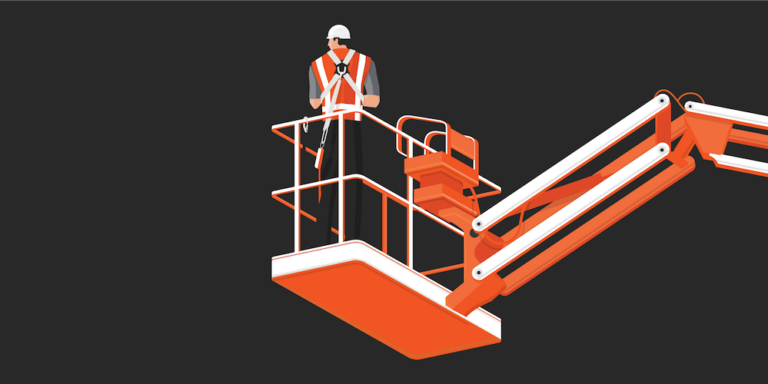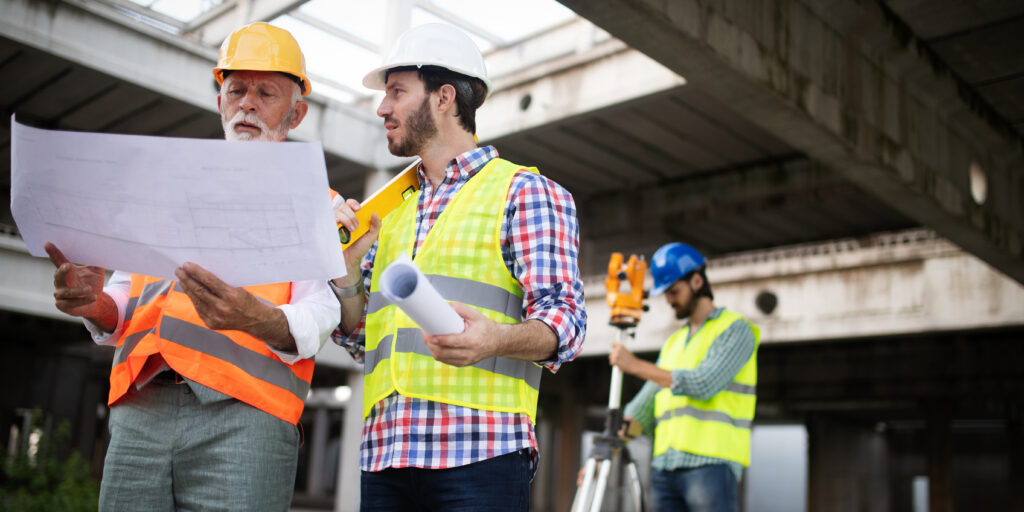— 5 min read
Construction Incident Reports: Documenting Accidents on the Jobsite
Last Updated Apr 16, 2025
Last Updated Apr 16, 2025

Responding to an incident on the job site can seem daunting. However, properly documenting accidents with a construction incident report — even in a stressful environment — is critical. Doing so can keep projects on track, mitigate risk and demonstrate your company’s commitment to keeping your workers healthy and safe. Over the years, there has been a rise in the awareness and tracking of incident rates as a powerful metric to benchmark a company’s safety performance. In fact, poor rates can lead to more surprise inspections and higher insurance premiums. It pays to be safe.
Table of contents
Definition and Purpose
A construction incident report is a construction document that recounts an incident that has occurred on a construction site. It's a significant step in helping to identify the cause(s) of an incident and is vitally important for preventing similar incidents occurring in the future.
Types of Construction Site Incidents
It’s no secret that construction can be dangerous. Working on a job site carries inherent risk due to the sheer volume of potential hazards present at all times. Many jobsite injuries are caused by four major events — workers falling, being struck by falling objects, electrocution and workers caught in or between equipment. Regardless of the cause or the severity of the injury, the site manager or safety manager should record the event in an incident report.
Below are several common categories of jobsite incidents.
Serious/Catastrophic Events
An unexpected accident that results in death, permanent harm, severe, temporary harm, psychological injury, or the risk thereof, is considered a serious/catastrophic event. Typical examples of such injuries include falls, vehicle or equipment strikes, scaffolding collapse, electrocution or other injury that results in hospitalisation, the loss of a limb or loss of motor function.
First Aid-Only Events
Minor cuts, scrapes, burns or injuries that happen on the job that don’t require a trip to the doctor fall into the bucket of first aid-only events. In other words, health and safety services are administered on the job site.
Medical-Only Events
A medical-only event is when someone seeks medical treatment beyond first aid, but it does not result in hospitalisation, lost time from work, or permanent injury. For instance, going to the doctor to see if you need stitches but being told they’re not necessary.
Recordable Events
Recordable events can be those that result in death, days away from work, restricted work, transfer to another job, medical treatment beyond first aid, or loss of consciousness. Injuries and illnesses include any work-related diagnosed case of cancer, chronic irreversible diseases, fractured or cracked bones or teeth, or punctured eardrums.
Report-Only Events
Near misses are a common type of report-only event — they could have led to bodily harm and/or property loss but didn’t (for instance, if a hammer falls from scaffolding and nearly hits someone on the head). Near miss incidents often precede loss-producing events, but they are often overlooked due to the lack of physical harm at the time.
Lost Time Events
A lost time event is when an occupational injury or illness prevents someone from being able to work their normal shifts. An example is someone who shatters their ankle after falling off a ladder and can’t return to work for a month.
Shape the Future of the Built Environment at Procore's Construction Summit
Engage with construction leaders and discover the latest technology and best practices that are driving change across the industry.

Information to Collect in an Incident Report
The primary purpose of a construction incident report is to uncover the circumstances and conditions that led to an event to help prevent similar future incidents in the future. Depending on the severity of the incident, the report may be circulated within the company or externally to insurers, regulatory bodies and possibly others. Properly evaluating and selecting the right form will make all the difference from the get-go and ensure all critical information is included.
- Who, where, when, and how
- Description of incident
- Findings
- Corrective actions and improvements recommended
- Appendix - attachments, witness/team statements, notes, photos, sketches, etc.
RIDDOR and Reporting Requirements
Certain construction incidents must also be reported under RIDDOR (Reporting of Injuries, Diseases and Dangerous Occurrences Regulations). This applies to serious or catastrophic events, major injuries, and specific dangerous occurrences. Employers, site managers, or designated safety officers are typically responsible for submitting these reports. Understanding who should submit a RIDDOR report is essential for legal compliance. Failing to report a qualifying incident can lead to fines, legal complications, and increased scrutiny from regulators.
Additionally, having a construction incident report template ready ensures that all essential details are captured accurately. A well-structured template might include:
- Date, time, and location of the incident
- Names and contact details of involved parties
- Description of injuries sustained (if applicable)
- Equipment or environmental factors involved
- Witness statements and photographs
- Immediate actions taken and recommended follow-up steps
This document can help organisations effectively document situations while also meeting RIDDOR requirements for the UK market.
Using Safety Data to Prevent Incidents
The construction incident report is a key part of any successful workplace safety programme. Safety programmes can decrease the likelihood of an injury by half, lower EMR to save you money and empower employees to become safety champions.
Companies with a strong safety culture generally experience fewer at-risk behaviours, decreased incident rates, lower turnover, less absenteeism and boosted productivity — a win for all.
Procore’s mobile-friendly Incidents Tool is based on regulatory requirements and makes documenting incidents approachable and intuitive. With it, you can contribute to a safer work environment and gather the information necessary to educate, focus resources and prevent similar incidents from happening in the future.
Learn more about how Procore helps UK contractors improve project outcomes, predict accidents, and mitigate loss from incidents: Visit Quality & Safety.
Categories:
Tags:
Written by
Tom Noctor
16 articles
Having worked in construction for many years both on the ground as an electrician and in the design space in roles such as BIM Manager, I witnessed the highly inefficient operations of our industry and also the amount of waste generated from project delivery. I am a Digital Construction Technologies advocate @Procore Technologies, supporting and guiding the construction industry in adopting/utilising technology to deliver projects in a lean sustainable manner.
View profileExplore more helpful resources

Construction Document Software: Essential Tools for Project Success
Construction projects depend on extensive paperwork, including designs, contracts, RFIs, and compliance records. A single misplaced document can trigger delays, disputes, or compliance violations. Despite increasing digital adoption, many teams...

Construction Planning: A Guide to Successful Project Execution
Every successful construction project begins long before the first brick is laid. Indeed, behind each structure – whether a towering skyscraper or complex infrastructure project – lies a carefully crafted...

Leveraging Analytics for Better Financial Forecasting in Construction
Financial forecasting is a difficult task in any industry. In construction, where companies need to manage volatile material costs, labour shortages and variation orders on a daily basis, fluctuations in...

Strategies to Prevent Rework: The Importance of Clear Instructions
In construction, “rework” is the dreaded process of redoing tasks due to mistakes, quality issues, or safety concerns. This unnecessary work drains budgets through wasted materials and labour while causing...